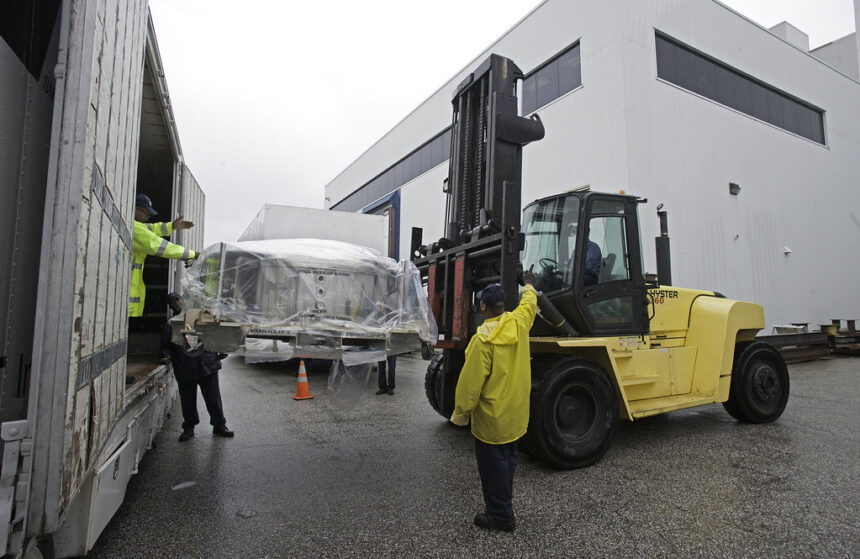The forklift mast assembly, fork carriage, and forks constitute the critical components of a forklift truck’s lifting mechanism. Often referred to as “the business end” of the forklift, this section plays a key role in material handling operations. Let’s delve into the components and their functionalities.
Forklift Mast Assembly:
- The mast is composed of multiple nested steel sections, allowing them to move relative to each other.
- The mast includes a stationary section attached to the front axle of the forklift, with additional movable sections that can telescope, similar to a telescope action.
- The load lifted by the forklift is not directly supported by the mast sections but by lift chains.
- Hydraulic cylinders, known as lift cylinders, move the lift chains, causing the mast sections to rise and provide guidance for the fork carriage.
Types of Masts:
- Single Stage (Simplex) Mast: Limits lift height relative to its closed height. The single-stage mast has a fixed height when closed.
- Triple Stage (Triplex) Mast: Offers the capability to lift loads higher while maintaining a lower overall height when closed. It is versatile for varied lifting heights.
Adjustments and Wear:
- As masts experience wear during use, adjustments are made to maintain optimal performance.
- Forklift engineers may add shims behind rollers or use adjustable brass wear plugs to compensate for wear and maintain proper clearances between mast sections and rollers.
Fork Carriage:
- The fork carriage moves vertically along the mast and is equipped with rollers that run in the mast channels.
- The carriage provides a stable platform for the forks and facilitates the lifting and lowering of loads.
Forks:
- Forks are the protruding arms of the forklift responsible for lifting and carrying loads.
- Forks are attached to the fork carriage and come in various lengths and configurations to accommodate different load sizes and types.
- Some forks may have specialized features such as fork extensions or attachments for specific material handling needs.
Key Considerations:
- Forklift capacities may vary based on the type of mast (single or triple stage).
- Regular maintenance and adjustments are essential to ensure smooth operation and longevity.
- Wear and tear should be monitored, and adjustments made to maintain optimal performance.
- Safety measures should be observed during any maintenance or adjustment procedures.
Understanding the intricacies of the forklift mast assembly, fork carriage, and forks is crucial for efficient and safe material handling operations. Regular inspection, maintenance, and adherence to manufacturer guidelines contribute to the longevity and reliability of these critical components.



Leave a Reply